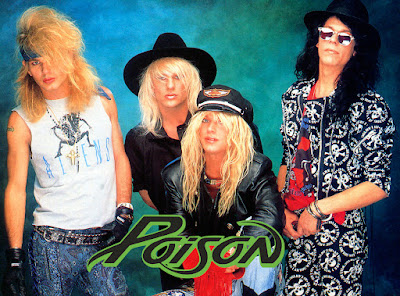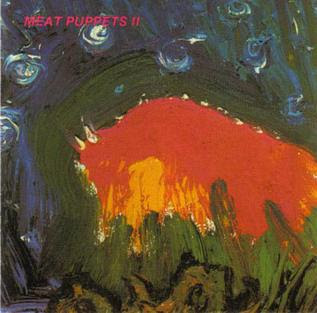I was inspired by a podcast called The 500 hosted by Los Angeles-based comedian Josh Adam Meyers. His goal, and mine, is to explore Rolling Stone Magazine's 2012 edition of The 500 Greatest Albums of All Time.
Album: # 314
Album Title: The Miseducation of Lauryn Hill
Artist: Ms. Lauryn Hill
Genre: Neo Soul, Hip Hop, R&B
Recorded: Mainly at Tuff Gong, Kingston, Jamaica
Released: August, 1998
My age at release: 33
How familiar was I with it before this week: Very Little
Is it on the 2020 list? Yes, #10 - moving up 304 spots
Song I am putting on my Spotify Playlist: Superstar
While growing up in Newark, New Jersey, singer, actress, songwriter, rapper and multi-instrumentalist Lauryn Hill was "surrounded by music". Her mother played piano, and her father sang in nightclubs. "Records", she has said, "were played all the time", including classic albums from Stevie Wonder, Curtis Mayfield, Aretha Franklin and Gladys Knight. Hill fondly remembers repeated spins of Marvin Gaye's record What's Going On, until she fell asleep each night as a child. (#6 on The 500). |
| Marvin Gaye What's Going On, (1971) |
When one listens to Hill's debut solo record, The Miseducation of Lauryn Hill, those influences are unmistakable. Critics have called Hill one of the greatest hip-hop artists of all time, and there is no denying her talent as a wordsmith and rapper. However, this record is so much more than that.
Miseducation is a genre-blending journey through reggae, rhythm and blues, hip-hop, jazz and soul. Furthermore, Hill is a rare talent in the world of hip-hop. She was responsible for most of the writing and production of the record. She also raps and sings expertly, navigating the two talents with enviable capacity. Her raps are stern, husky and powerfully confident, while her voice is sweet, angelic and tonally pure.
 |
| Hill (1989) |
Although the record is essentially new to me, it was nevertheless a huge hit. I do remember hearing the song Doo Wop (That Thing) from my brief time working the bar at, Jack Astors, a casual dining restaurant and her beautiful rendition of Can't Take My Eyes Off You, seemed ubiquitous after exposure in the film Conspiracy Theory.
As a teacher, any record with the word “education” in the title will get my attention. Hill took the name from two sources:
A 1974, blaxploitation drama called The Education Of Sonny Carson which was based on the autobiography of the titular character -- Robert "Sonny" Carson.
And The Mis-Education of the Negro by Carter G. Woodson from 1933, which inspired Carlson.
Carson, a Korean War veteran, was a controversial, racial civil rights activist and community leader in Brooklyn, New York. In the 1960s and 70s, he was best known for his public protests of the school systems in African-American neighbourhoods. |
| Movie Poster for The Education of Sonny Carson |
Much of his revolutionary thinking was informed by the second inspiration behind the title of Hill's record -- the above mentioned seminal book by Woodson, an African-American historian and scholar."When you control a man's thinking you do not have to worry about his actions. You do not have to tell him not to stand here or go yonder. He will find his 'proper place' and will stay in it. You do not need to send him to the back door. He will go without being told. In fact, if there is no back door, he will cut one for his special benefit. His education makes it necessary."
My inquiries into Woodson led me to many articles, YouTube videos and TED Talks. I also reflected on a text that our school administrative team recently provided for our staff called Culturally Responsive Teaching & The Brain. It is a 2015 academic text written by Zaretta Hammond to help other educators "promote authentic engagement and rigor among culturally and linguistically diverse students".
I am hesitant to try to summarize the valuable lessons in Culturally Responsive Teaching for a couple reasons. First, I am still in the process of understanding this approach. As Hammond says, this is not an "off-the-shelf, plug-and-play program" to bring sudden, miraculous change a classroom. Secondly, my blog does not lend itself to a comprehensive examination of Hammond’s views. Instead, I direct you to her book or perhaps this podcast where Hammond discusses four key misconceptions about this approach. |
| Cult of Pedagogy Podcast #78 |
However, I am most wary of being misinterpreted, particularly at a time when there is a hostile segment of contemporary society fixated, and wildly misinformed, on an upper-academic postulate called Critical Race Theory.
However, I venture to say, Culturally Responsive Teaching is not Critical Race Theory. And, to be clear, I am not teaching Critical Race Theory or (despite the efforts of some caustic, talking-head agitators) attempting to make any of my students feel as if they are inherently racist.
Daily, I see fellow educators work diligently to encourage every student to strive for success. We make readers and mathematicians, while fostering creativity through a rich exploration of the arts. We talk about science, history and geography, while also advocating good health and physical fitness.
However, we also promote kindness, empathy and, perhaps most importantly, critical thinking. We want to graduate students who feel they belong, not just in their communities, but in a larger Canadian society -- a society to which they can contribute and improve.
Critical thinking is vital to success – and it can be applied to many of the ideas that Carson, Woodson, Hammond, and even Hill were getting at. How do we reach people so they can self-actualize, be successful and help themselves and others succeed?
Being responsive to the needs of learners is just good practice. For those who disagree, Hill’s plaintive stanza on the album's final, title track would break the heart of any educator who heard it from a student in their charge.
"My world, it moves so fast today
The past, it seems so far away
And life squeezes so tight that I can't breathe
And every time I've tried to be,
What someone else has thought of me
So caught up, I wasn't able to achieve."
I suppose, at our core, we all want to live up to the expectations of this well-known Peanuts cartoon panel.
On a side note, the Marvin Gaye record that soothed Hill to sleep as a child moved to position #1 on the 2020 edition of The 500 list; and Hill’s record has also made the top ten right alongside the Stevie Wonder (#4) and Aretha Franklin (#13) records she grew up with. That’s mighty fine company, Ms. Hill.
Also, I had no idea that Hill played troubled teenager and singer Rita in the movie Sister Act 2:Back In The Habit.














.jpg)





.jpg)

















.jpg)





